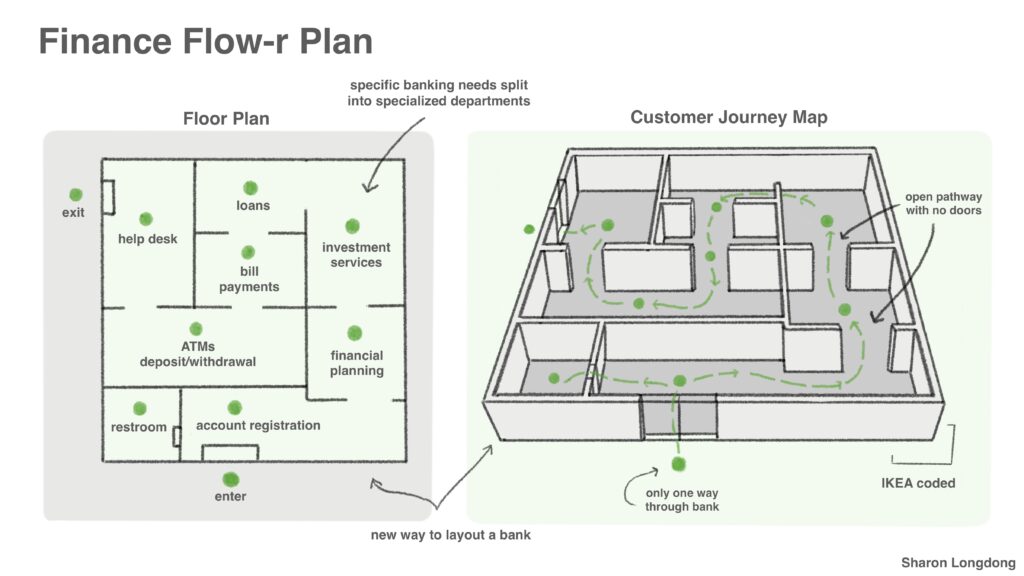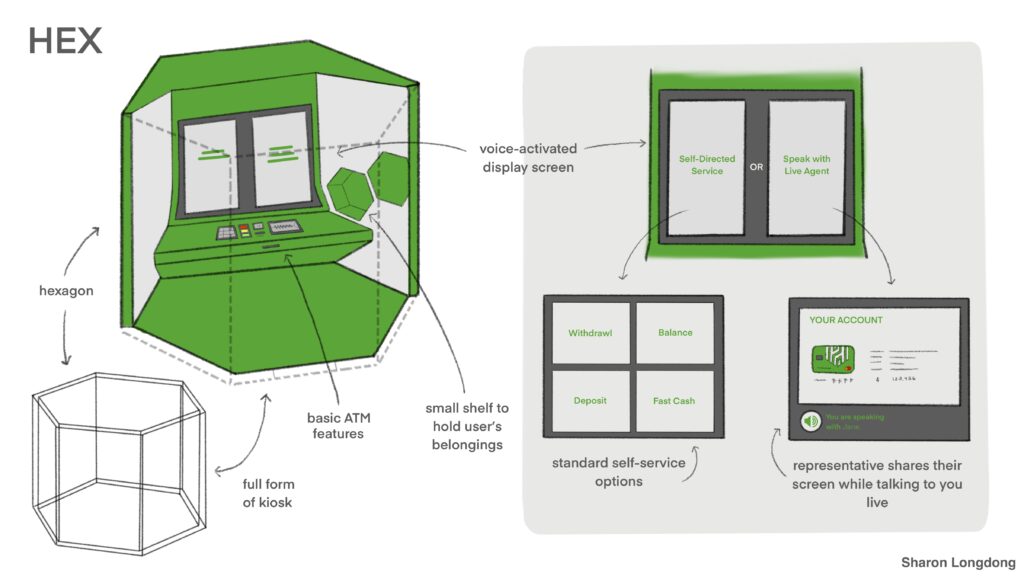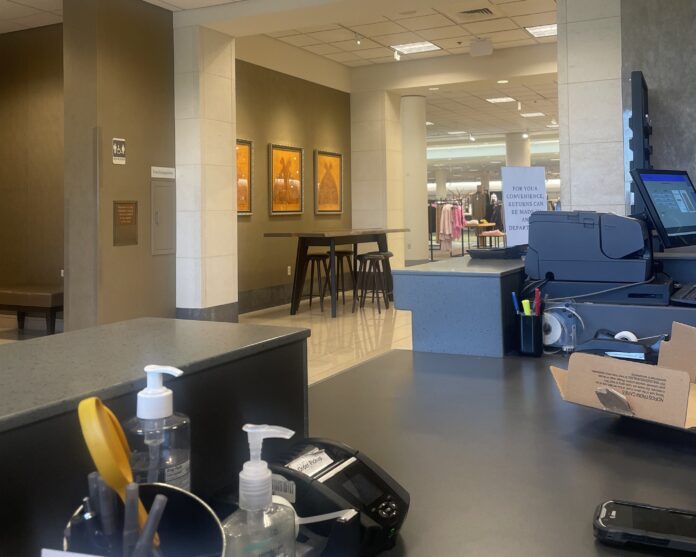Let’s talk customer service. It’s the help desk where I go for returns and to fix any issues or make complaints that I have with the business. Or, it’s the phone line I call to resolve my issues or ask questions when I don’t want to talk to someone face-to-face.
Right?
With my research, I am exploring what customer service is and what it really means. I want to dive deeper into what truly counts as customer service, past the help desk. It’s more than just a place, but an approach to a positive experience for all involved in the transaction and business. There are so many different types of customer service and components that factor into how one is providing it.
Wait a second.
Don’t I mean receiving customer service, not providing it?
That’s the difference here. I’m not talking about receiving customer service, I am researching customer service through the lens of the customer service employees and how it is provided from them.
When you think about receiving feedback about customer service for new areas of opportunity or improvement, it’s natural to immediately think about gathering it from the customer. They are, in fact, the user. However, the point of view of the employees is often overlooked. Where does self-service customer service fit in all this? All this telling information is yet to be discovered. To truly find unique standpoints on customer service, I turned to the other side of it and looked into how employees can provide a new perspective on it all. With Huntington’s want to deepen their customers’ relationship with them, how can I use these new perspectives to help increase customer affinity with Huntington? Let’s find out together.
Let’s lay the groundwork for my research. “Customer service is the support, assistance, and advice provided by a company to its customers both before and after they buy or use its products or services. Customer service is a critical factor in ensuring buyer satisfaction, retaining customers, and growing a business” (Grant, 2024). This quote emphasizes the idea that customer service is not a physical place, but a system meant to keep customers happy. Referring back to the different types of customer service I mentioned, self-service is a very popular form of customer service in recent times. “Today’s digitally native customers appreciate the opportunity to resolve problems themselves without waiting for a human agent or specialist to answer the phone or respond to an email. Self-service is inherently convenient and fast. It allows consumers to use their chosen channels to resolve problems and tailor their experience to their needs” (Carter, 2023). Both self-service and human representative customer service are the two main types that I center my research around. However, I’m not only focusing on the what, but also who this affects.
Customers are affected by customer service. No-brainer there. The idea of customer service is centered around the customers and their experience. Customer service employees and the management team of those employees are also important stakeholders. With both of these, we can gain insights into the customer’s needs with a different viewpoint regarding their experience and knowledge of providing customer service. Funny enough, researching both customer service employees and managers is what I happened to do for my primary research.
For my primary research methods, I specifically targeted the employees at the Nordstrom located at Easton Town Center. “In a category frequently criticized for its inability to evolve, Nordstrom stands out among department stores for its innovative approach and generally positive earnings results” (Salpini, 2019). Known for their unique type of customer service, I reached out to the Nordstrom associates for their take on servicing a customer. “The more your business “thinks like Nordstrom” –makes it clear to customers that you have their back, makes the experience pleasurable and safe and personal” (Solomon, 2016). I’ve been working at Nordstrom for a little over two years now. I am currently the Cash Room Specialist and a Service Experience Representative, formerly the Assistant Service Experience Manager. Looking at this as a customer service employee working there, I’m able to notice or ask questions about things that someone unfamiliar with the processes Nordstrom has would not even know to ask about. With my survey, I received responses from all the regular selling and customer service associates of the store about their general customer service preferences and experiences. In my interviews, I talked to managers about how their experience affects their perception of customer service at other places and how they go about providing it. I also took note of a service rally (store meeting) I attended that focused on the factors of great service and Nordstrom’s out-of-the-box view of what that entails. With these three different methods, I got a plethora of all types of information about customer service.
Certainly, I must be discovering these new perspectives for a reason. So, what’s really at stake here? To put it simply, the customer. One issue I’m finding through my research reveals the divide between customers in preferences of types of customer service and how it is affecting businesses. “Self-service solutions can only provide the right results when implemented strategically,” (Carter, 2023). With the quick developments of new types of self-services, they can easily miss the mark and cause more harm than good. “A single bad customer experience may lead customers to leave and eventually add to the cost of acquiring new customers” (Freshworks, n.d.). While one customer might not seem very bad at first, the effect can snowball and the problem can be rooted in an issue that continues to cause other customers leaving.
Another issue I’m noticing is the need to develop banking services technologically while still taking into consideration the irreplaceable effect of service with a human representative. “Consumers are increasingly digitally engaged with their banks. Nearly a third use their bank’s app daily. However, they also want more. Over the next three years, 64% say they would like their bank to provide them access to a digital banker.” With the evident want for more digital development within the bank, the very same article states, “86% of respondents globally said they used a physical branch in the past year and 45% said they visit a branch at least monthly. When asked why they visited a branch, consumers said it was for help (66%), guidance (68%), complaints (61%), or money management (60%)” (Guillot, 2024). These divides are tough to navigate through, but I may have a start.

With one of the salient issues being the divide or balance struggle between self-service/technology and in-person service, this design conjecture hits both. The HuntHelp Headset attempts to find balance between the two by combining them in virtual reality. “The virtual experience offers an enhanced view of banking, with sophisticated interactivity models allowing consumers to engage in virtual conversations that seamlessly blend the branch contact center experience” (Grant, 2023). In theory, having access to whatever type of customer service you prefer wherever and whenever you want is a good way to please all. What this misses the mark on is the in-person experience that some people crave. While you can choose to be in a virtual reality bank with a human representative, it doesn’t exude the same types of feelings that you get in person. Finding a balance for everything may not always be the answer.

The Finance Flow-r (Floor) Plan is all about designing specifically for the experience. I’ve mentioned that customer service is something far past the help desk and is instead an experience in some ways. This conjecture takes that idea and puts it in the form of a new floor plan for banks. Specifically targeted to help customers first opening their account, this floor plan guides them through different banking departments to get them started in their future relationship and journey with the bank. “Consumers who have a good experience usually pass on that information to others, whether that’s through word-of-mouth to people they know, customer reviews, or social media mentions. This often helps businesses generate new sales” (Grant, 2024). One problem with this conjecture is the lack of consideration for their loyal customers. To reinvent the bank for first-time customers only is not only a bad idea business-wise, but sets the idea that the bank is not focusing on their loyal customers. Customer service should be able to provide for all types of customers, those new with the company to those who’ve been with the company from the beginning.

Customer service should be easily accessible and conveniently quick. The HEX is a customer service kiosk located where there are no banks for Huntington customers that need all different types of service. “Self-service enhances customer experience by allowing clients to access an immediate response to their queries – making the service experience much more effortless” (Carter, 2023). The kiosk offers quick self-service options as well as the option to talk to a representative live for issues they need to be walked through. A unique thing about the kiosk is the technology of the card swipe. “A client expects you to remember the preferences you discussed, regardless of channel when they talk to a representative” (Robinson, n.d.). The card accesses the customer’s account and history of their past interactions for smooth, personalized service in the HEX. This is another attempt at combining technology with the face-to-face service at banks, but still longs for improvement regarding form and concept development.
Perspective and experience are important things to consider when researching anything really. Relating that to the concept of customer service and how it can deepen a customer’s relationship with Huntington, finding new perspectives through customer service employees and their experiences only helps my incoming design process when attempting to design for customer service experiences. New insights, especially those from the overlooked perspectives, offer areas of opportunity that are currently untouched, which means a design is just waiting to be created.
References.
Carter, R. (2023, May 15). The good, the bad, and the ugly of self-service. CX Today. https://www.cxtoday.com/contact-centre/the-good-the-bad-and-the-ugly-of-self-service/
eLeaP Editorial Team. (2021, April 5). Customer service training for non-service employees: A guide for employers. eLeaP. https://www.eleapsoftware.com/customer-service-training-for-non-service-employees-a-guide-for-employers/
Freshworks. (n.d.). Customer pain points: How to identify concerns and tips to address them. Freshworks. https://www.freshworks.com/explore-cx/customer-pain-points/
Grant, D. (2023, December 11). How augmented reality and virtual reality are reshaping financial services.
Grant, M. (2024, February 21). What is customer service, and what makes it excellent? Investopedia. https://www.investopedia.com/terms/c/customer-service.asp
Guillot, C. (2024, March 6). Bank customers are happy, but their loyalty is fragile. The Financial Brand. https://thefinancialbrand.com/news/customer-experience-banking/bank-customers-are-happy-but-their-loyalty-is-fragile-175735
Robinson, H. (n.d.). 9 customer service technology trends to watch. ScreenMeet. https://www.screenmeet.com/resources/customer-service-technology
Salpini, C. (2019, December 9). Store concept of the year: Nordstrom Local. Retail Dive. https://www.retaildive.com/news/store-concept-nordstrom-local-dive-awards/566188/
Solomon, M. (2016, January 26). What any business can learn from the way Nordstrom handles customer service. Forbes. https://www.forbes.com/sites/micahsolomon/2016/01/26/what-any-business-can-learn-from-the-way-nordstrom-handles-customer-service/




